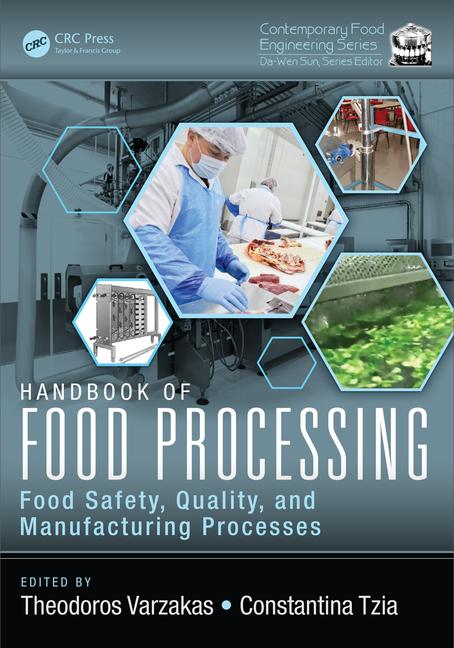Is Your Kitchen Certifiable? A Case for the Sanity of Food Protection Manager Programs

Within the foodservice retail food industry, I am absolutely convinced that teaching timely and accurate food safety to kitchen and wait staff is the single, most cost-effective means of preventing foodborne illnesses. That is, provided that the training is done correctly. According to the U.S. Food and Drug Administration (FDA) Food Code, a credentialed individual is an essential component of an effective food safety program. Indeed, proper training and subsequent certification imbues responsibility, accountability, and in many instances, authority on its recipient. For the most part, the Food Protection Manager (FPM) credentialing program accomplishes what it was designed to do—and that is to minimize public risk of foodborne illness.
However, over the past few weeks, several incidents relating to FPM training and credentialing gave me pause that our well-intentioned efforts may not be as altruistic as they first appear, raising some concern in my mind that the original intent may have become somewhat skewed and eroded. Oddly enough, the sequence of these incidents pointed to a pattern that started me thinking about the state of food safety education, and specifically, about the FPM programs that we select for employees. I relate these things because as a forensic sanitarian, I can see eventual vulnerability of an industry and a potential erosion of due diligence at this end of the food supply chain. I also believe that it is a proverbial slippery slope that can and must be avoided if foodservice retail is to play its part in assuring the safety of the products it provides to the consuming public.
A Credentialing Epiphany
My first inkling that not all may be well occurred during a meeting with corporate principals and FPMs at a moderately large catering operation. The caterer had gotten into serious trouble with the local health department, resulting in a profound and rather expensive wake-up call. During our meeting, we started outlining permanent food safety measures that would be implemented to ensure continued compliance with the local food code and thus, significantly reduce risk of foodborne diseases. I turned to one of the credentialed FPMs and asked if he and the kitchen staff had ever considered establishing a Hazard Analysis and Critical Control Points (HACCP) program. He had no idea what I was talking about. I rephrased the question being more explicit in mentioning menu review and potentially hazardous foods in the context of food safety. Again, there was an inquisitive look, but no response. It became quite obvious that this individual had limited to no knowledge of HACCP, yet he was adamant about his credentialed status as food protection manager.
As it turns out, he had taken the course and sat for the exam many years before. His certificate had yellowed with age. Additionally, the state in which he worked did not require continued competency. Subsequently, I learned that his training in proper handwashing techniques and temperature control also left much to be desired. Yet, he met the criteria of the law.
About a week after this conversation, I received a call from a consulting firm that specializes in providing FPM training. They wanted someone from the local area to conduct ongoing classes for the managers of a supermarket chain. I told them that I would be delighted to do so. Those who know me also know that I am in my glory when I teach and need no cajoling to get up in front of a class. I informed the potential contractor of my qualifications and experience, including that I have three food safety education programs and a HACCP program to choose from, and that I am authorized to proctor two different FPM examinations. I spoke of preparation time (typically two hours for every hour of lecture), and volunteered that I would tailor my presentation to the audience, as well as detail some of the changes listed in the 2005 Food Code by selectively editing my prepared digital slideshow presentation used in such training courses.
The initial response was positive. However, when we started seriously talking money, it turned out that the supermarket was offering the equivalent of $0.12 per hour. Yes, you read it correctly: twelve cents an hour to prepare, travel, set up, teach and do what was necessary to see the course to completion. I graciously declined their offer, but interestingly enough, they must have found someone to work at that price. I contend that you get what you pay for, and with this background information, I would therefore question the quality of the training the retailer ultimately received at that price. Yet, the training likely met the criteria of the law.
The third incident resulted in my “FPM epiphany.” I came to the realization that we, the regulatory community, may have our priorities somewhat skewed. In recent conversations with some of my colleagues (fellow sanitarians) I got the distinct impression that during a retail foodservice inspection, the inspector may place greater emphasis on the FPM credential than on the knowledge demonstrated as a result of the credentialing process. This has to do with expediency, given the limited amount of time that most inspectors have to conduct a reasonable evaluation. Somehow the piece of paper that states that the individual named thereon is a bonafide FPM has become more important than ensuring that that individual knows what food safety actually is or means. This is tantamount to The Scarecrow miraculously becoming a genius because the Wizard of Oz bestowed on him a genuine, gold-leaf-sealed diploma.
I know that these are fairly harsh words, but along with this subtle shift in the regulatory community’s emphasis, I sense that the retail food industry is responding in kind. Some operations in the industry are using the FPM credential merely to appease the regulatory community. The upshot to this has resulted in credentialing individuals as inexpensively and expeditiously as possible and—horrors upon horrors—teaching to the test; a strategy that ensures the highest possible pass rate. In other words, in some instances, it has become more important to memorize the answers to the exam than to understand the science and concepts of food safety and the strategies of control. This emphasis shift is rather curious, because we all know that it is far cheaper to provide good training to all foodservice workers than it is to pay an attorney to defend against a foodborne illness incident resulting from the lack thereof. But it meets the criteria of the law.
Investing in Knowledge-Based Certification
I can think of no food safety professional who would oppose universal adoption of the Conference for Food Protection’s Standards for Accreditation of Food Protection Manager Certification Programs (www.foodprotect.org/pdf/standards.pdf). After all, I don’t think that the disease-causing organisms care much about politics or jurisdictional disputes. Having said this, short of taming the political beast that presumes dominion over our bowels, I would like to take this opportunity to offer a few suggestions that may help get the FPM training back to its original intent, even though the laws that govern food safety education are not uniform. It is up to us collectively to take the initiative.
In researching this short essay, I called most of the principle players in this segment of the industry who provide the educational materials and examinations; only one did not respond. Overall, their opinions and thoughts mirrored each other’s.
There are three distinct components to an FPM program. All felt that the most important is the qualification of the trainer. Most of our conversation centered on this leg of the foodservice credentialing triangle. The importance of the trainer is followed in short order by the course materials and the credentialing examination. When shopping for a FPM program, we need to bear in mind that many foodservice workers may be language- and learning-challenged. It therefore becomes extremely important to translate the science of microbiology, epidemiology and culinary arts into practical and understandable terms.
For this reason, the FPM trainer should be qualified in adult education through demonstrated proficiency in conducting training programs, either as a teacher or a professional trainer with at least two years’ experience. In addition, a trainer should have a formal educational background in food safety and food science or technology; experience in the restaurant business would be a definite plus. Formal education does not necessarily mean college attendance, but courses from the military or the FDA Office of Regulatory Affairs’ on-line university (ORAU), whose mission is to provide high-quality, cost-effective training critical to protecting American consumers to ORA personnel, state and local regulatory officials, and other stakeholders (www.fda.gov/ora/training) qualifies nicely.
Everyone I spoke with agreed that the most important of the trainer’s qualifications is that he or she is credentialed as a Certified Food Safety Professional (CFSP) through the National Environmental Health Association (www.neha.org/credential). This credential integrates food microbiology, HACCP principles and regulatory requirements with problem-solving skills and is therefore an excellent foundation for trainer qualification. Being registered as a sanitarian would also be a qualifier that may be seriously considered.
The bottom line is that the trainer is the most important component in inculcating a food safety mindset on the student. The knowledge, skills and attributes that he or she brings to the food safety tutorial can only achieved with education and experience. And, the quality of instruction can be measured by the pass rate of the students. Remember, regardless of how good the program is, if the trainer doesn’t know how to teach or is not knowledgeable in the topic he or she is teaching, the student will not learn and certainly won’t retain any useful information.
The course materials have to accomplish two things extremely well. First, the syllabus and any visual aids need to emphasize the major components of food safety, particularly handwashing, temperature abuse and cross-contamination, and present these compeonents as a practical application to every foodservice operation. Second, because we look to the Food Code for minimum requirements in food safety, it becomes important to include the most recent version of the Code as the basis for the course materials. Not necessarily the Code itself, but rather the important operational considerations detailed therein. The course materials need to do this at a sixth- or eighth-grade level without the intimidation factor associated with learning about microbiology and food safety principles. It also needs to do this in several languages to reach a wide and diverse audience.
The visual aids should parallel the syllabus, and do this in such a manner that it prompts ease of comprehension, as well as invoking questions from the student. We live in a world of visual stimulation, and teaching a topic as important as food safety means really making the information appealing. Visual aids should be informative, exciting and in-your-face, and the graphics should be recognizable to the audience for which it is intended. In short, you as the customer should preview any program before you buy to ensure its appropriateness and emphasis. If needed, most providers will tailor their presentation to the targeted type of operation.
The length of the course is determined by convenience and expediency. It should be long enough to follow the national standard. The best of the program offerings allow the student home study of the syllabus and other written materials in advance of the didactic portion of the course. This has a lot to do, though, with the logistics of the course provider selected. By the way, it isn’t a bad idea to have some local health department involvement with the course.
The credentialing examination is best described in two words: CFP-ANSI accredited. There are three such examinations available:
• Certified Food Safety Manager Exam (National Registry of Food Safety Professionals)
• Certified Professional Food Manager Exam (Experior)
• ServSafe Certification Exam (National Restaurant Association Educational Foundation)
Although these three accredited certification examinations differ (as well they should), they do have quite a bit in common. Each provider has met a rigorous set of accreditation standards and they do cover the same materials to ensure comprehension of the principles of food safety.
Shopping With a Goal
When you provide high-quality FPM training to your managers and wait staff, the return on investment is a higher level of confidence that your retail foodservice business is actually providing your customers with the safest product possible. My best advice is to shop around for a FPM program that will make your kitchen and facility certifiable. Find the best FPM trainer, the best course material to meet your needs, and the exam that best exemplifies your corporate philosophy and commitment to food safety. You wouldn’t buy a pair of shoes without trying them on, so why purchase a FSM program without first previewing it? And finally, let us all keep urging our legislators to adopt universal regulations in Food Protection Manager training and certification to allow for ease in reciprocity and uniformity in application.
Forensic sanitarian Robert W. Powitz, Ph.D., MPH, RS, CFSP, is principal consultant and technical director of Old Saybrook, CT-based R.W. Powitz & Associates, a professional corporation of forensic sanitarians who specialize in environmental and public health litigation support services to law firms, insurance companies, governmental agencies and industry. For more than 12 years, he was the Director of Environmental Health and Safety for Wayne State University in Detroit, MI, where he continues to hold the academic rank of adjunct professor in the College of Engineering. Among his honors, Powitz was the recipient of the NSF/NEHA Walter F. Snyder Award for achievement in attaining environmental quality, and the AAS Davis Calvin Wagner Award for excellence as a sanitarian and advancing public health practice. He is the first to hold the title of Diplomate Laureate in the American Academy of Sanitarians. FSM readers can contact him directly at sanitarian@juno.com or by visiting www.sanitarian.com.
Looking for a reprint of this article?
From high-res PDFs to custom plaques, order your copy today!






